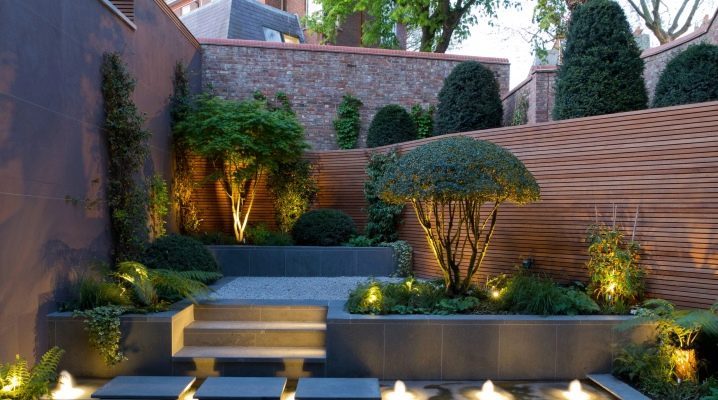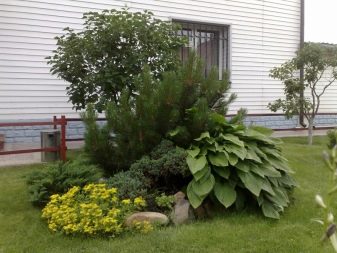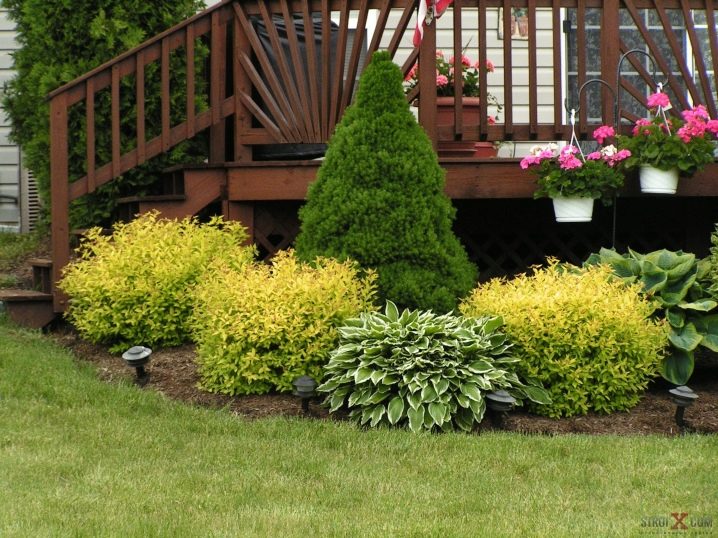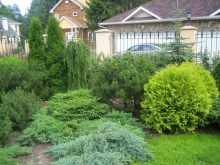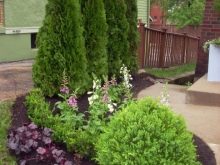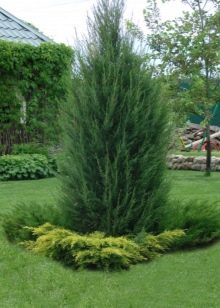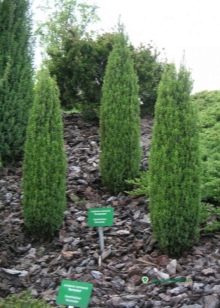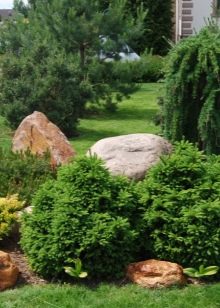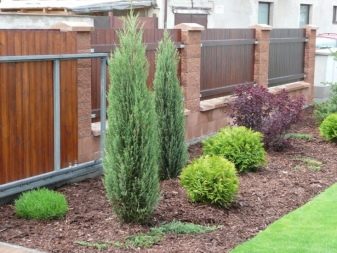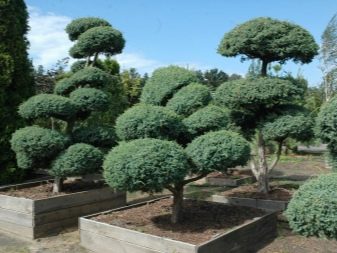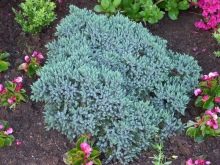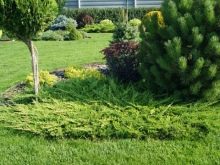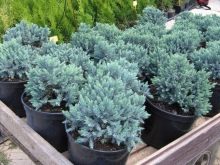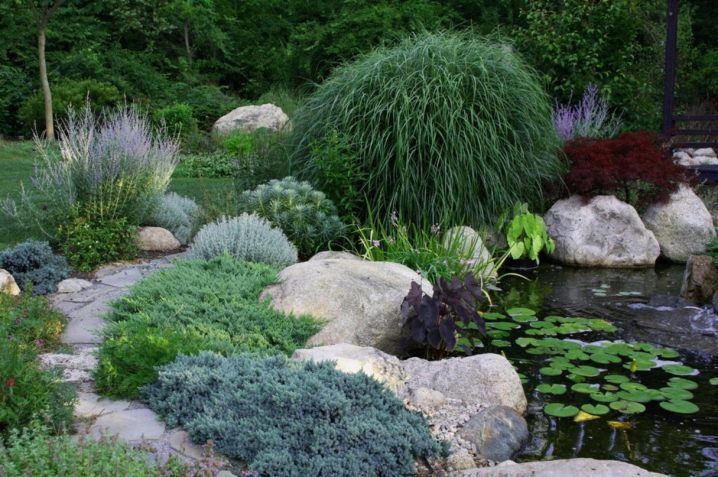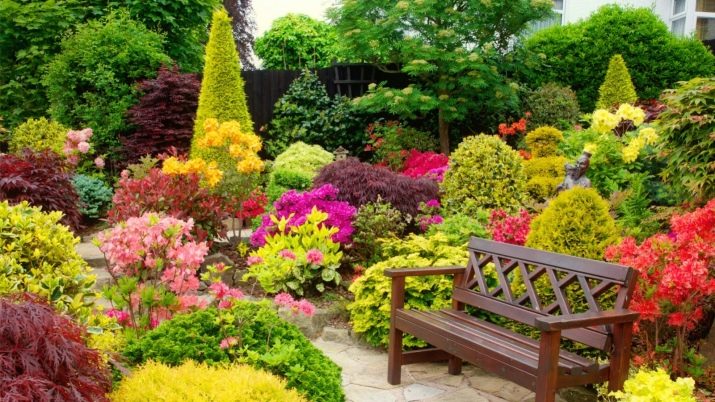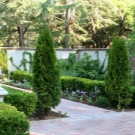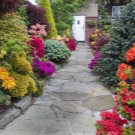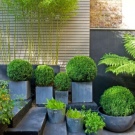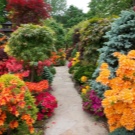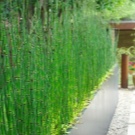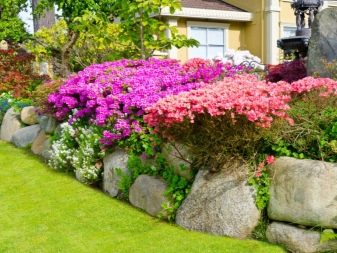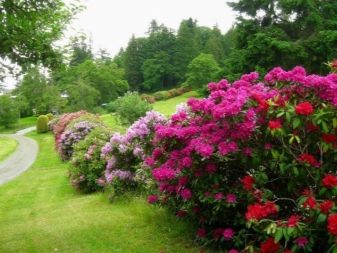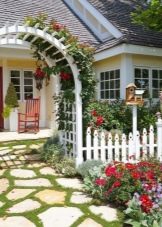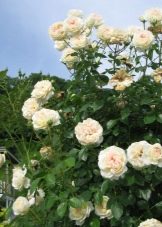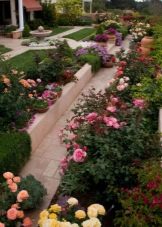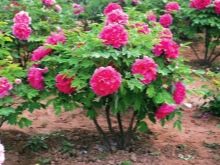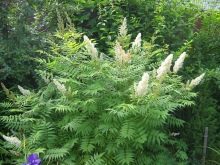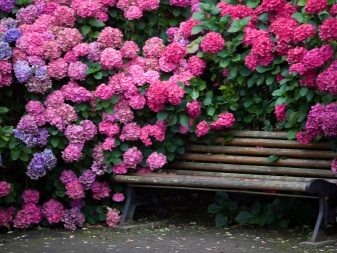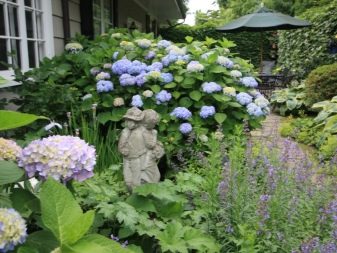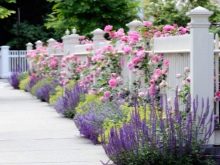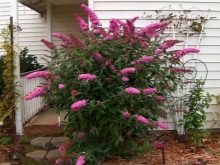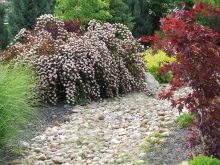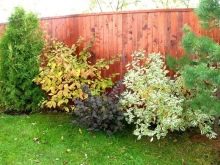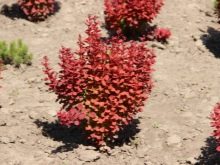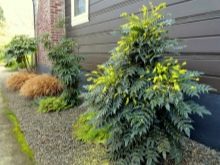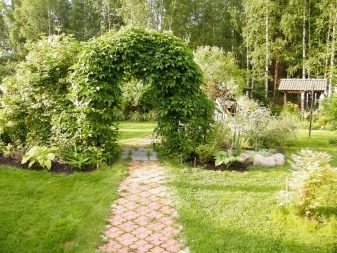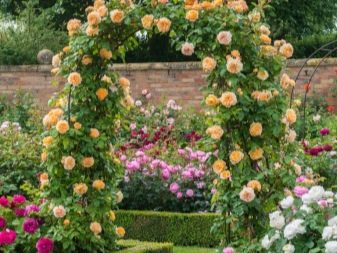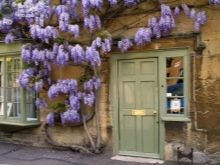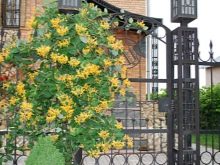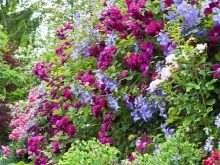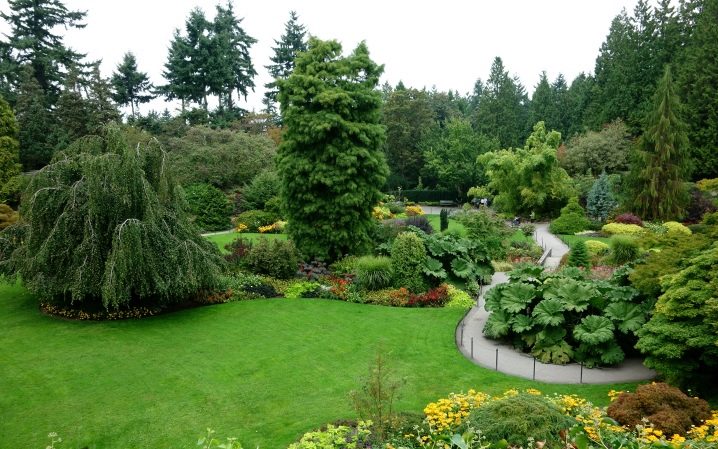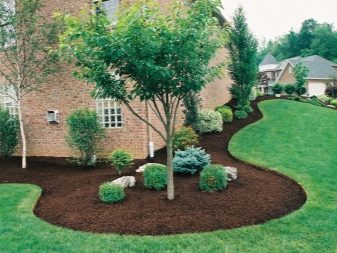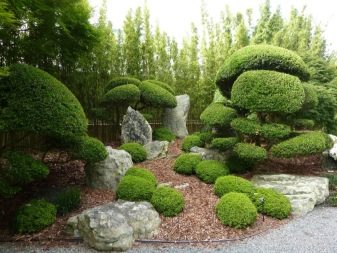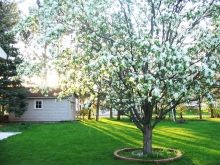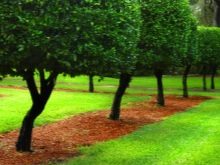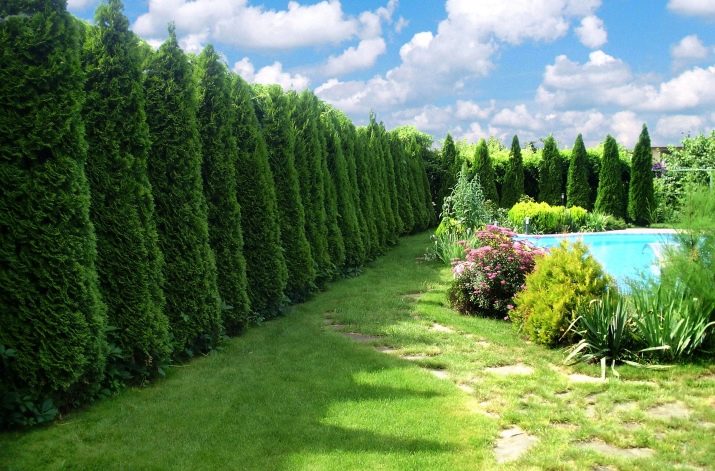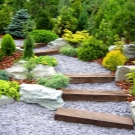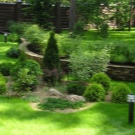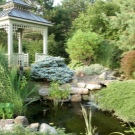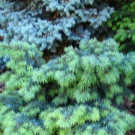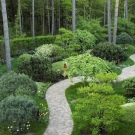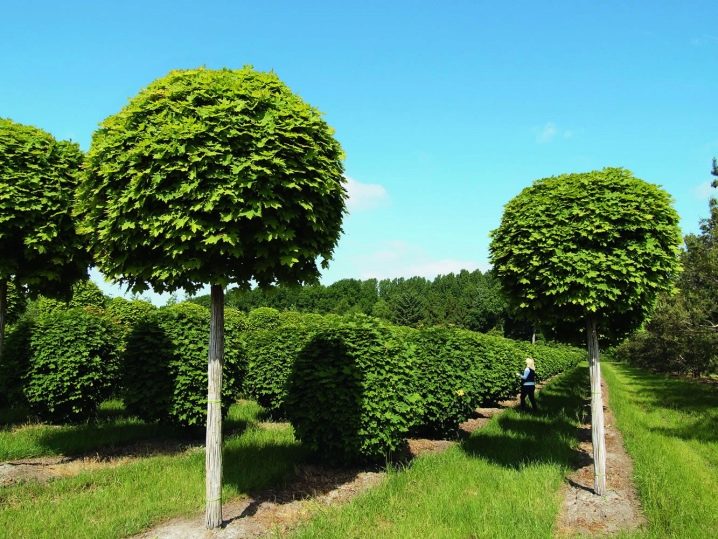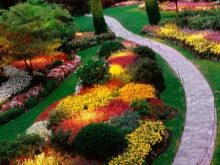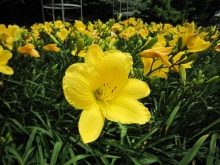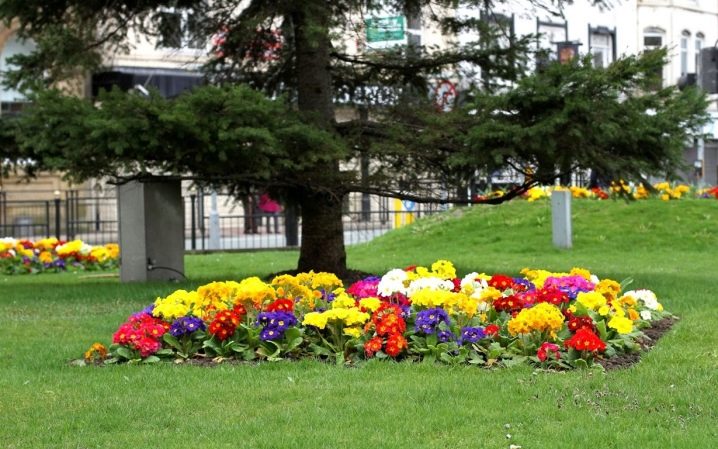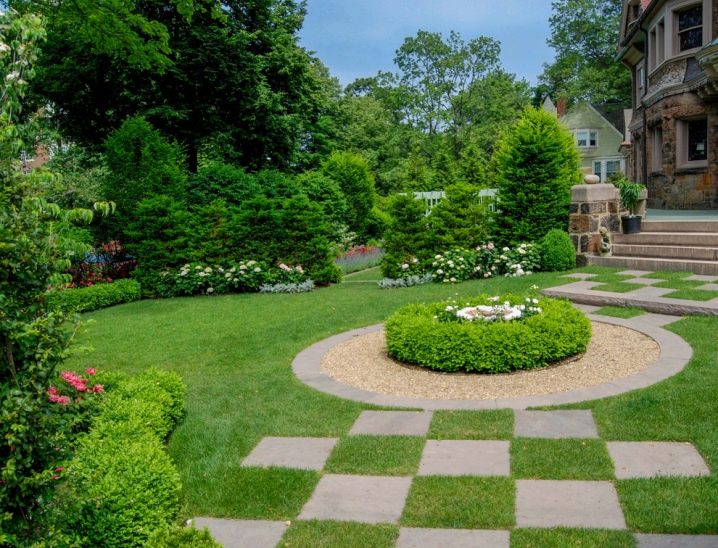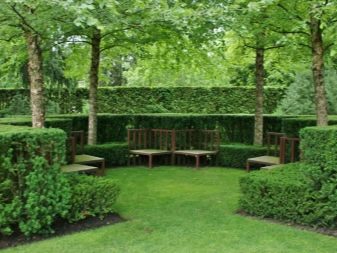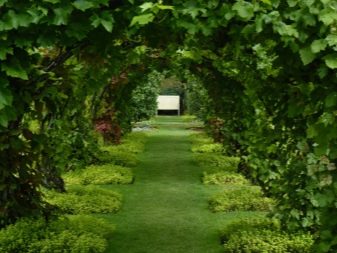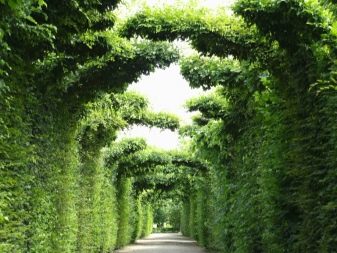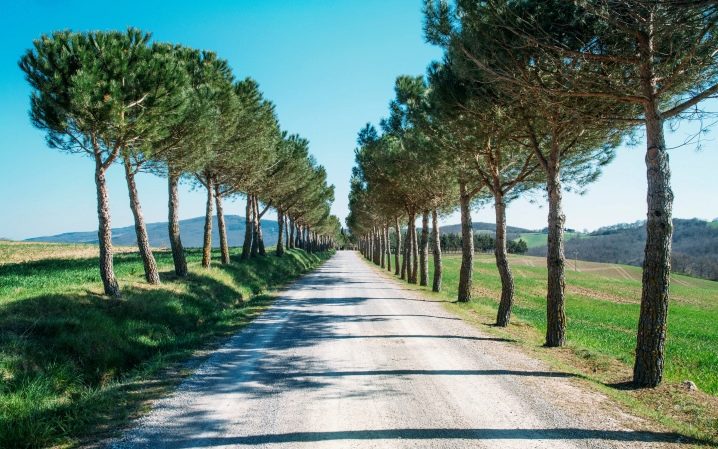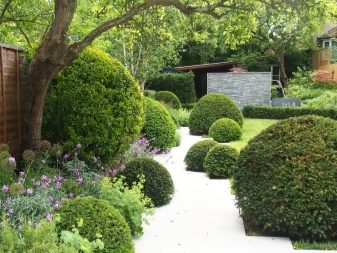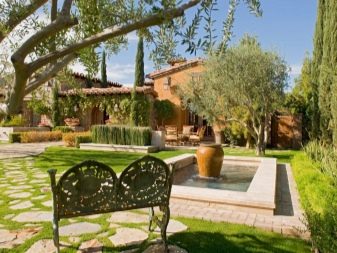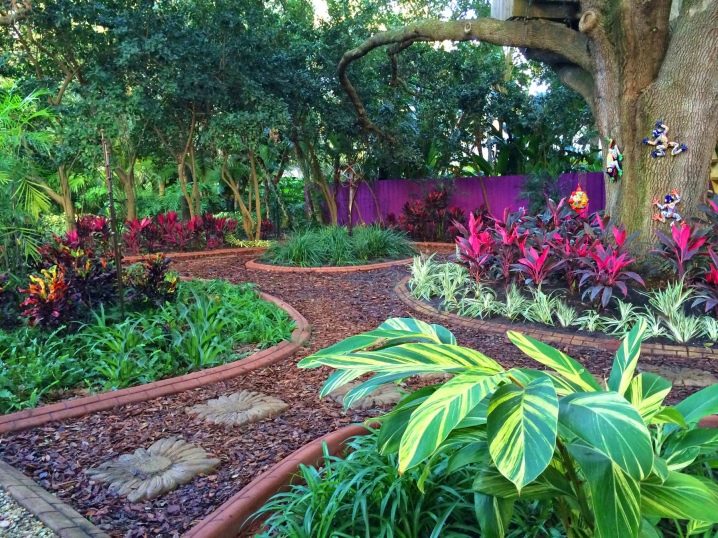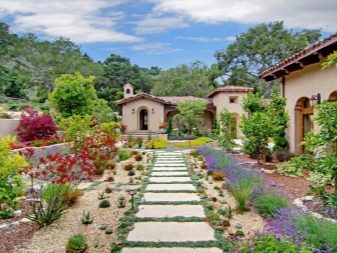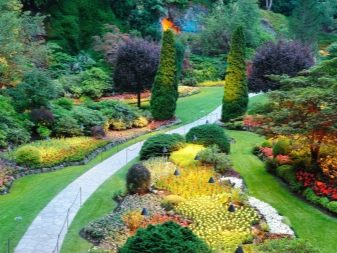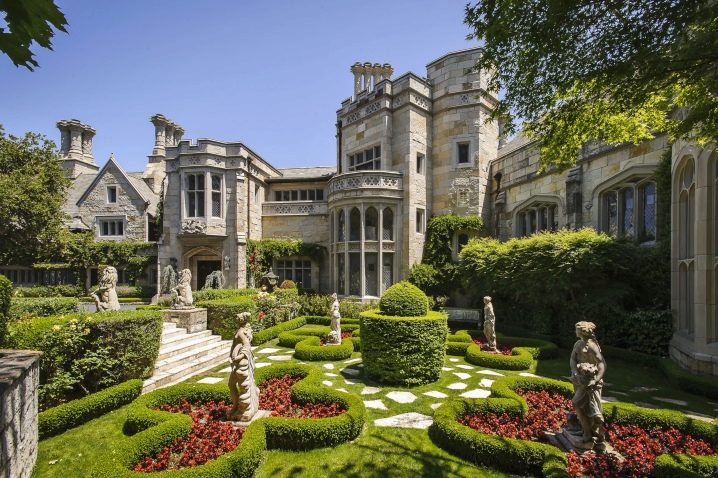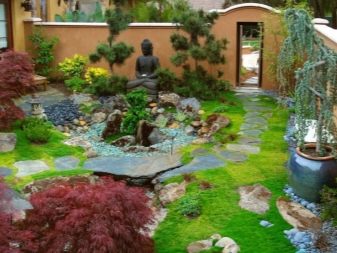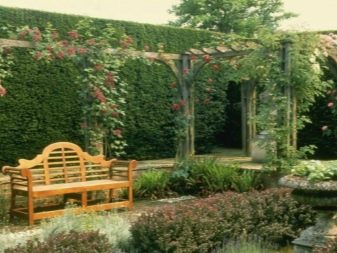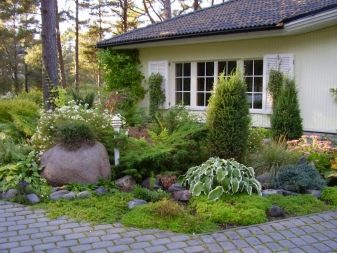Trees, shrubs and flowers in landscape design
Each owner of the garden plots dreams that his house is immersed in greenery and flowers. In an effort to escape from the problems and urban fuss in the silence of nature, we are trying to somehow organize the green space on our site so that it is pleasing to the eye, convenient and useful for everyone. After all, only outside the city we can relax and be alone with nature and with ourselves.
In order for the plot of land to create a good mood, it is necessary to arrange it taking into account the compatibility of individual plants, the rules of their harmonious arrangement, and the combination of colors.
How to choose?
Before proceeding to the selection of plants for the garden, it is necessary to get acquainted with their species.
Types of ornamental shrubs
Both deciduous and evergreen shrubs can help aesthetically and attractively decorate the garden. The latter allow you to make the site attractive not only in summer, but also in the cold season.
Evergreen shrubs can be deciduous and coniferous. In the central regions of Russia with cold winters, coniferous shrubs are most commonly used for landscaping, such as juniper, yew, fir, cypress, microbiota, Mugus pine, dwarf spruce, cypress, Canadian spruce.
Especially popular in the design of landscapes recently used various types of junipers:
- Juniper ordinary - large shrub with bluish barbed needles. In landscape design usually use columnar and dwarf forms of this bush. The latter are perfect for decoration of alpine slides, the first - for the formation of hedges. The following varieties are most widely distributed: Green Carpet, Compressa, Repanda Sentinel.
- Juniper Cossack - the most unpretentious. It has scaly needles and grows up to one and a half meters. Its main use is the design of lawns and rockeries. The most popular forms are Glauca, Tamariscifolia, Variegata.
- Rock juniper has a narrow crown with a sharp arrow-shaped crown and soft blue needles.The maximum height of the plant is about 2.5 m. This shrub is most suitable for creating alleys and hedges. The most popular sorts of juniper rock are Moonglow, Blue Arrow (Blue Arrow), Blue Carpet and Blue Chip.
- Juniper Chinese - shrub with a height of up to 10 m yellowish or greenish color is more often used in rock gardens or in compositions from groups of plants. Famous varieties - Olympia, Strickt, Blue Alps.
- Juniper horizontal. This is a short creeping plant. Needles may have green (Andorra Kompkt), yellow (Lime), gray-green (Alpina, Bar Harbor), bluish-green (Ice Blue, Viltoni), blue ("Prince of Wales") or bluish-silver hues (Jade River, Gray Pearl). This type of juniper is used to decorate stony gardens, borders and slopes.
- Juniper scaly - slow-growing shrub, has almost hanging branches. The maximum height of the shrub is 3-4 meters. Popular varieties are Meyeri, Blue Carpet, Holger, Dream Joy, Hannetorp, Blue Svid, Blue Star. Used in the design of rock gardens.
All types of juniper are incredibly beautiful.Nevertheless, the presence of this plant will not be appropriate in every garden.
The bush will most organically fit into the landscape design in the Scandinavian style with its naturalness, spaciousness and correct geometry.
Juniper will look especially good against heather, mosses and lichens.
English style also suggests the presence of this evergreen coniferous bush, but in tall species with green or blue needles. When designing a garden in the English style, the shrub acts not as the center of the composition (as in the Scandinavian style), but as a kind of final chord that gives the composition a finished look.
Evergreen deciduous shrubs are more often used in landscape design in areas located in a warm climate zone, where there are no snowy and frosty winters. Such plants include: camellia, rhododendron, ilex, boxwood, callistemon, bamboo, aucuba, cordilina and others.
Among the variety of ornamental shrubs emit flowering and decorative leafy plants. Their names speak for themselves. Beautiful flowering shrubs are bright floweringand decorative and deciduous - with an interesting color of foliage. They are designed to create in the landscape color spots of different shades in different periods of time.
The queen among the flowering shrubs is a rose. Pink moods of spring and yellow waterfalls of forsythia flowers set spring mood. Then they are replaced by snow-white and lilac-pink avalanches of lilac, spirea, hawthorn and viburnum buldenezh.
Summer opens with flowering of rhododendrons, tree peonies, Chubushnik. Potentilla bushes dotted with yellow, red or orange flowers create a special mood in the garden.
The summer garden design also uses a mountain ash with its white panicles-inflorescences, tamarix with pink clouds of small garlands of small flowers, various types and varieties of hydrangeas, colqution and action with their lush inflorescences.
In the autumn, the silverweed and hydrangeas, roses and snowberry, budley and euonymus, redrook and bladder continue to delight the eye.
Landscape designers like to use decorative leafy shrubs when decorating sites.
Especially deserve their love:
- turf white with its bright white-green, pink-green or yellow-green foliage;
- yellow, crimson and purple flowers;
- barberry with bright green, golden or red-violet foliage;
- fieldfare;
- aralia;
- mahonia
For a vertical landscape design most often use different types of shrub vines. Among them are especially popular: wild grapes, girl's grapes, climbing rose, wisteria, curly honeysuckle, clematis, actinidia.
Tree species
In the design of the backyard, you can use a variety of tree species. The main thing is that the trees approach the site according to their height, according to their susceptibility to light and nutrients, according to their color and growing conditions.
Deciduous trees are the main relief spots of the site due to the pronounced skeletal axis and spreading crown. They should be selected by:
- Crown shape.
- Foliage. Pay attention to the shape of the leaves, their size, change their color during the season.
- By the nature of flowering. Some trees are distinguished by the presence of large flowers (for example, magnolia), others have nondescript almost imperceptible flowers (maple, rowan, willow), and some bloom so unnoticed that it is difficult to say whether they are flowering or non-flowering (birch).
- By the time of blooming flowers. So, hazel, willow, and cornel bloom first in the garden.
- For decorative fruits. Especially beautifully look in the landscape of mountain ash and viburnum, which attract attention due to bright red berries.
In the formation of the composition of the garden are also actively used fruit trees. Their names are known to all: pear, cherry, apple, apricot, plum, cherry. The benefits of their planting are obvious - in the spring they turn the backyard plot into a fragrant blooming cloud, and in summer and autumn they delight the owners with tasty fruits.
And what kind of landscape design will do without conifers. They are an excellent addition to deciduous and fruit trees and make the garden more exotic and elegant.
Choosing coniferous trees, you should pay attention to:
- Color needles. The color palette of these plants includes different shades of green, blue and yellow;
- The shape of the tree. It may be spherical or conical. Geometrically rigorous forms of these plants give the landscape a special slimness;
- Color and texture of the bark. This parameter can also contribute to the overall perception of the natural space around the country house;
- Aroma. Separate hvoyniki produce essential oils with a noticeable pleasant smell.So, in the summer heat, you can inhale the pleasant aroma coming from the pine, and in the spring you can enjoy the smell of larch;
- The presence of cones. Cones also bring the highlight to landscaping. So, in young fir trees, cones have an interesting reddish or purple color, while in fir they look upwards, like candles on a Christmas tree.
Unusual design can be created on the site with the help of trees that are grafted on a trunk. These are small trees (usually up to 2 m) that are grown with a graft. A curled, weeping or spherical crown is grafted onto an even trunk. The result is a miniature willow, elm, pear. For grafting usually used plants belonging to the same genus.
Flowers
Flowers - one of the most important attributes of the decor of the backyard landscape. Without them, the plot will seem empty and lifeless. The presence of flowers that replace each other throughout the season, creates a festive mood, adds color to the site.
Flowers are a kind of link between trees and shrubs. This bundle is performed by arranging borders, flower beds, parterre, alpine slides or single placement.
For the design of the site use a variety of colors: perennial and annual, tall, stunted and groundcover, shade-tolerant and light-loving, ampelous, wild-growing, flowers with decorative foliage and others.
Tree layout options
In landscape design there are several options for placing trees on the site.
Hedge
With this option, trees are used as a kind of fence that should perform a number of functions: protect the site from wind, noise, snow, curiosity of neighbors and passers-by, mark the boundaries of the territory, disguise non-aesthetic-looking objects.
To form a hedge, trees are planted in a single line at a minimum distance from each other. Deciduous trees with dense pyramidal crowns or trees whose branches begin to grow at the very bottom of the trunk (lindens, maples, poplars - Canadian and Berlin) are perfect for performing the function of a hedge.
Low hedges can be made of felt or ordinary cherry. If the size of the plot allows, you can create a fence of several tiers,in one of which there will be tall trees (ash, elm, basket willow, Ussuri pear, ornamental apple), and in the other - shrubs.
Alleys
The alley is a kind of road, on both sides of which trees or shrubs are planted with a certain frequency. Trees can be planted fairly close to the top of their crowns intertwined, thus forming a homogeneous arch.
Placement of trees in the form of alleys is justified only on large spaces. On a small garden plot, the landing of the avenue will create a sense of randomness, since the avenue will not be visible due to the shortage of the area around it.
To create alleys, plants that are resistant to adverse natural factors, such as birch, oak, linden, elm, maple, sycamore, hornbeam, beech, cypress, spruce, larch, fir, are used.
Group
This arrangement of trees is used when a composition of several trees and shrubs is created in a garden. Plants are planted according to certain rules of a combination of colors, sizes and shapes.
In group planting, the principle of multi-tiered must be observed.If a group of plants is located near a hedge or wall, then the tallest trees are planted in the background, and in the front - undersized.
When placing a group in an open space, the highest elements should be located in the center, and the least high elements should be at the edges.
The easiest way to plant trees. But at the same time it is necessary to carefully select the tree, because it must be equally attractive at any time of the year. Therefore, ornamental plants with an unusual crown, interesting foliage color, beautiful flowers or colorful fruits are most suitable for such plantings.
If the site is small, then only one tree is planted on it, which will be the center of the entire landscape composition. As tapeworms, usually used are spruce or pine, oak, horse chestnut, ornamental apple trees, skumpiyu, black poplar and others.
Create a composition
Groups of trees, shrubs and flowers should be created taking into account the rules of a combination of shapes, colors and sizes of plants. They can be placed in various places of the site: along the fence, near buildings, recreation areas, along tracks, in open spaces.
Each composition should consist of plants with different heights, shapes and colors. But sometimes when designing a landscape, plants are grouped according to a single trait: for example, a composition of curb bushes with a round crown or a group of trees of the same species, but of different ages, or a composition of various shrubs, trees and flowers of the same color (silver or red) .
When creating compositions, trees should harmoniously relate to the location of other plants, their size and color. During the preparation of a group of plants it is necessary to look at it from the side from different points of the garden.
Do not forget about the longline placement of plants - from the highest to the lowest. On the southern side, plants demanding light are usually located.
Making a group of plants, it is necessary to consider the timing of flowering of each of its elements. This allows you to maintain the decorative composition throughout the season. And to maintain attractiveness and in winter, the group must contain evergreen trees or shrubs.
And do not neglect the introduction to the composition of annuals, cereals, herbaceous plants, decorative elements.This makes the groups more original and dynamic.
Beautiful solutions for the yard
The courtyard with a rocky garden is decorated in Indian style. Decorative leafy shrubs and various kinds of hvoyniki emphasize the individual style of the owners of the house.
The landscape design of this yard is mainly based on vertical gardening. For this purpose, pergolas with flowering clematis vines and a hedge with geometrically regular shapes are used.
Decorated with flowering shrubs, the courtyard of a private house shakes its elegance of colors and the magnificence of natural forms.
Thuy, host, stonecrop, juniper, pine and wild grapes - all in this yard in its place. And all together they form an excellent composition that contributes to the pacification and maintenance of emotional balance.
How to decorate the garden with ornamental trees, see the next video.
